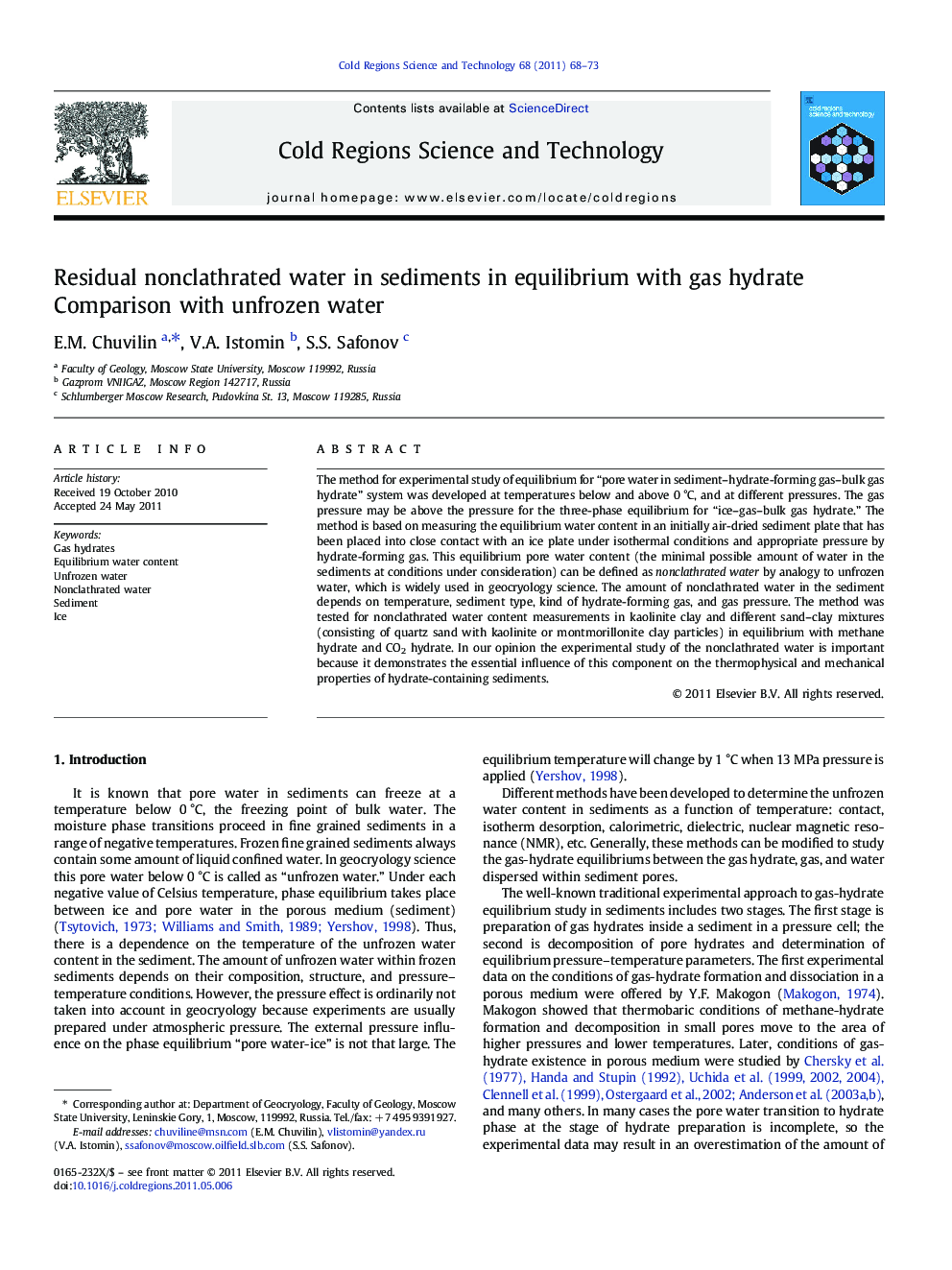| Article ID | Journal | Published Year | Pages | File Type |
|---|---|---|---|---|
| 4676141 | Cold Regions Science and Technology | 2011 | 6 Pages |
The method for experimental study of equilibrium for “pore water in sediment–hydrate-forming gas–bulk gas hydrate” system was developed at temperatures below and above 0 °C, and at different pressures. The gas pressure may be above the pressure for the three-phase equilibrium for “ice–gas–bulk gas hydrate.” The method is based on measuring the equilibrium water content in an initially air-dried sediment plate that has been placed into close contact with an ice plate under isothermal conditions and appropriate pressure by hydrate-forming gas. This equilibrium pore water content (the minimal possible amount of water in the sediments at conditions under consideration) can be defined as nonclathrated water by analogy to unfrozen water, which is widely used in geocryology science. The amount of nonclathrated water in the sediment depends on temperature, sediment type, kind of hydrate-forming gas, and gas pressure. The method was tested for nonclathrated water content measurements in kaolinite clay and different sand–clay mixtures (consisting of quartz sand with kaolinite or montmorillonite clay particles) in equilibrium with methane hydrate and CO2 hydrate. In our opinion the experimental study of the nonclathrated water is important because it demonstrates the essential influence of this component on the thermophysical and mechanical properties of hydrate-containing sediments.
Research highlights► We study equilibrium (nonclathrated) water in gas hydrate contained sediments. ► We developed experimental technique of nonclathrated water determination. ► This water in sediments sharply falls with increase of gas-forming pressure. ► Nonclathrated water in sediments increases with the increase of temperature.
